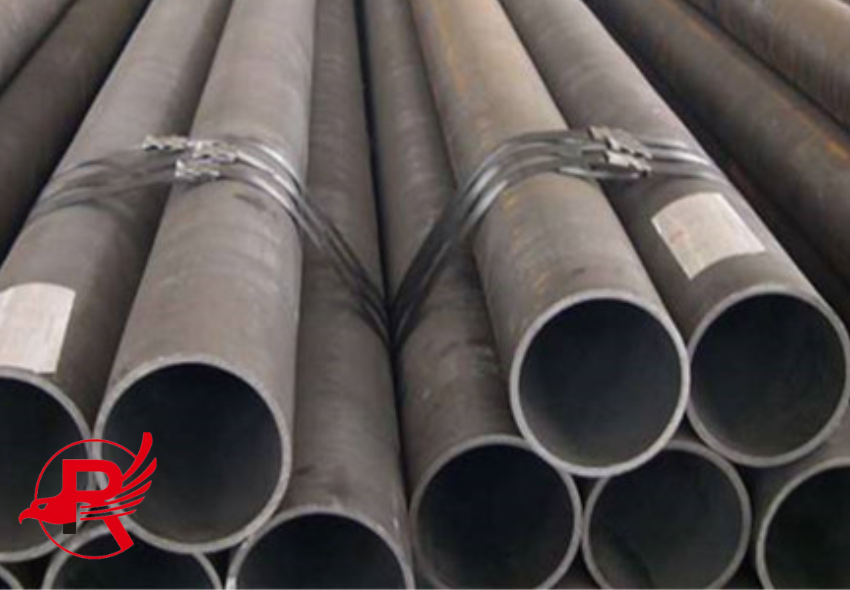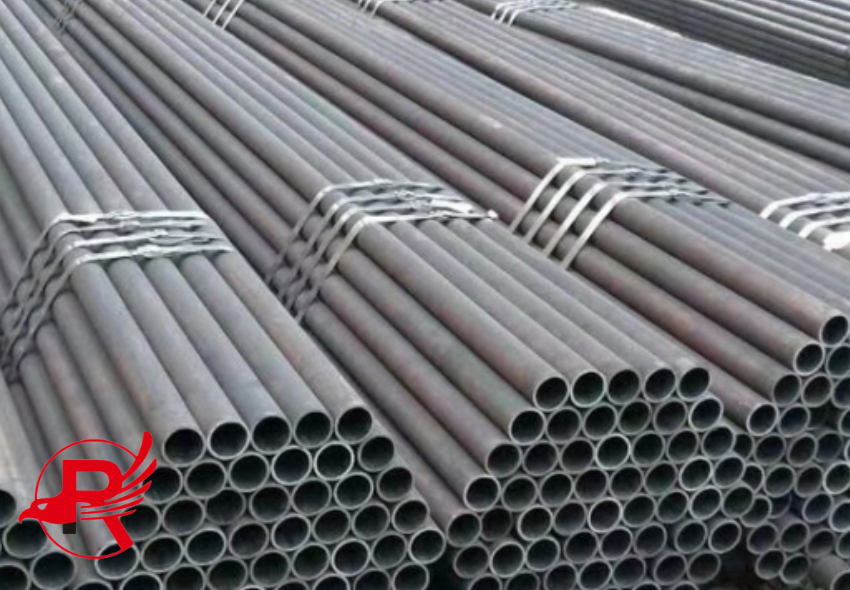Round Steel Pipe, as the "Pillar" In the industrial field, play a crucial role in various engineering projects. From the characteristics of its commonly used materials, to its application in different scenarios, and then to the proper storage methods, every link affects the performance and service life of carbon steel pipes.
Common material applications
Low Carbon Steel Pipe (such as 10# and 20# steel)
Low Carbon Steel Pipe has a low carbon content, which makes it have good plasticity and weldability. In the field of fluid transportation, such as urban water supply networks and low-pressure water and gas transportation pipelines in petrochemicals, 10# steel is often used in pipes with diameters ranging from dn50 to dn600 due to its low cost and easy welding. Steel 20# has a slightly higher strength and can withstand certain pressure. It performs well when transporting water and oil media of general pressure and is commonly found in industrial cooling water circulation systems. For instance, the cooling water pipes of a certain chemical plant are made of 20# carbon steel pipes, which have been operating stably for a long time, ensuring the cooling requirements of the equipment. In the manufacturing of low and medium pressure boiler tubes, they also play a significant role, suitable for steam systems with a pressure of ≤5.88mpa, providing stable heat energy transmission for industrial production.
Medium carbon steel (such as 45# steel)
After quenching and tempering treatment, 45# medium Steel Pipes has a tensile strength of ≥600mpa, with relatively high hardness and strength. In the field of mechanical manufacturing, it is often used to manufacture key components such as machine tool spindles and automotive drive shafts. With its high strength, it can meet the high load and complex stress that the components bear during operation. In building structures, although it is not as widely used in pipelines as low-Steel Pipes, it is also employed in some small structural components with high strength requirements, such as certain connecting parts of tower crane booms, providing a solid guarantee for construction safety.
Low alloy high strength steel (such as q345)
The main alloying element of q345 is manganese, and its yield strength can reach about 345mpa. In large-scale building structures and bridge projects, as pipe fittings, they are used to withstand huge loads and pressures, such as the steel structure supports of large stadiums and the main structure pipe fittings of cross-sea bridges. With high yield strength and excellent comprehensive mechanical properties, they ensure the stability and safety of buildings and bridges during long-term use. It is also widely used in the manufacturing of pressure vessels, such as various storage tanks in petrochemicals, which can withstand the pressure of the internal medium and ensure production safety.

Storage method
Venue selection
Round Steel Pipe should be stored in dry and well-ventilated indoor warehouses. If conditions limit the storage to the open air, a site with high terrain and good drainage should be chosen. Avoid storing in areas prone to corrosive gases such as near chemical plants to prevent the gases from eroding the surface of the Round Steel Pipe. For instance, in engineering construction projects by the seaside, if carbon steel pipes are placed outdoors near the sea, they are prone to corrosion by the salt carried by the sea breeze. Therefore, they should be kept at a certain distance from the seaside and proper protection measures should be taken.
Stacking requirements
High Carbon Steel Pipe of different specifications and materials should be classified and stacked. The number of stacking layers should not be too high. For small-diameter thin-walled pipes, it is generally no more than three layers. For large-diameter thick-walled pipes, the number of layers can be appropriately increased, but it should also be controlled within a safe range to prevent the bottom steel pipes from being deformed under pressure. Each layer should be separated by wooden or rubber pads to prevent mutual friction and damage to the surface. For long steel pipes, dedicated supports or sleepers should be used to ensure they are placed horizontally and prevent bending and deformation.
Protective measures
During storage,Carbon Steel Pipe should be inspected regularly to check for any signs of rust or corrosion on the surface. For Carbon Steel Pipes that are not in use for the time being, anti-rust oil can be applied to the surface and then wrapped with plastic film to isolate air and moisture and slow down the corrosion rate. If slight rust is found, promptly sand off the rust with sandpaper and reapply protective measures. If the rust is severe, it is necessary to assess whether it affects the performance in use.
The common materials of Carbon Steel Pipe each have their unique application scenarios, and a reasonable storage method is the key to maintaining their performance and extending their service life. In actual production and life, only by fully understanding and applying these knowledge can Carbon Steel Pipe better serve various types of engineering construction.

Contact Us for More Information
Email: sales01@royalsteelgroup.com(Sales Director)
ROYAL GROUP
Address
Kangsheng development industry zone,
Wuqing district, Tianjin city, China.
Hours
Monday-Sunday: 24-hour Service
Post time: Aug-14-2025

